10 learnings from more than 21 years of blackgrass trials
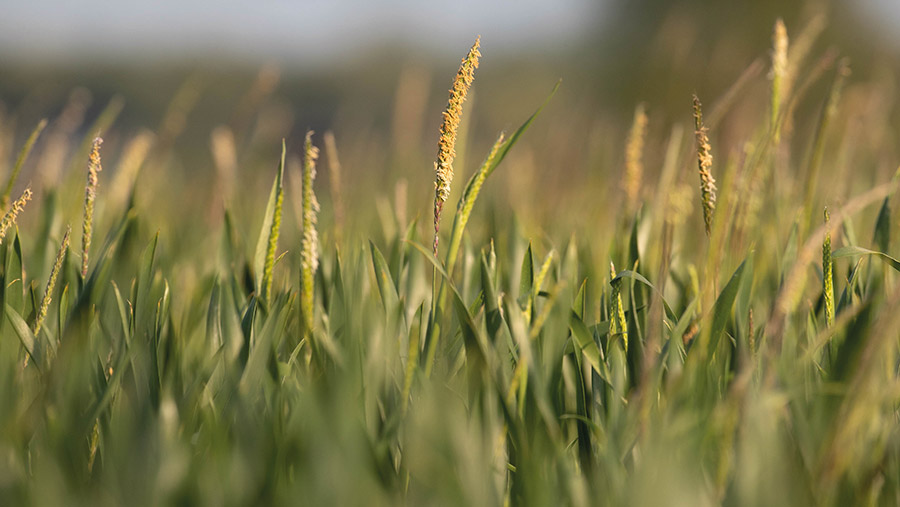 © Tim Scrivener
© Tim Scrivener More than two decades of work at Agrii’s Stow Longa site have shown how blackgrass can be successfully managed with plots getting as low as zero ears/sq m on a farm where the wrong decision can lead to big yield losses.
Agrii head of agronomy Colin Lloyd recalls that in the beginning it was mainly herbicide trials. In 2000, one promising contender was really effective against blackgrass, and that turned out to be Atlantis (iodosulfuron + mesosulfuron).
See also: Video: Electronic robot weed zapper cuts inputs and carbon
But he realised that being a sulfonylurea, its control wouldn’t hold and other elements would be needed, and that’s why Agrii started looking at cultural controls too. Herbicides are still trialled, but they are now a minor part, he says.
The site is on heavy boulder clay and had been originally managed under 10 years of min-till, which was common practice at the time, as farmers were forced to cut costs and focus on winter cropping because of the low grain prices.
Consequently, there was a build-up of seed and the blackgrass population approached 1,500 ears/sq m, which was having a huge impact on yields.
Much progress has been made since, so much so that this year the highest count was 376 ears/sq m and the lowest a relatively clean 16 ears/sq m.
To help heavy land farmers tackle blackgrass, here Mr Lloyd picks out his 10 key learnings.
1. Reset with rotational ploughing
The cultivations strategy trial started in 2010 with a third wheat which was then followed by oilseed rape and three wheats, to put the plots under pressure.
Cultivations that were compared were strip-till, plough, deep (15cm) cultivations, a single shallow cultivation (disc cultivator) and two passes of shallow cultivations (disc followed by tines).
Ploughing gave 98% control while the worst was strip-till when drilled earlier, at 32% control. The min-till techniques gave control in the mid-60s.
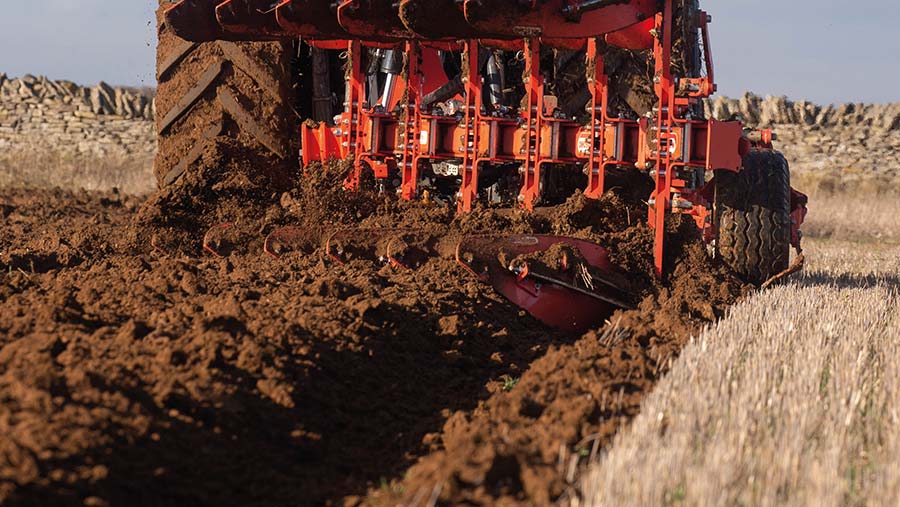
© Tim Scrivener
In year two, however, ploughing seemed ineffective where it had been ploughed the previous year. He says this shows that if you plough again, it pulls the seed back up.
“It proved that cultivation strategy can have a big impact on blackgrass numbers.” Mr Lloyd adds that year three was when growers could really see something different.
Comparing ploughing followed by two years of direct shallow strip-till drilling, versus min-till followed by two years of direct shallow strip-till drilling, visitors could see that three years on, there were still benefits of ploughing, with 84% blackgrass control compared with 33%.
Consequently, yields were higher at 7.21t/ha against 3.65t/ha for the non-plough option.
However, some growers will point to the extra diesel cost of ploughing. When looking at the figures, Mr Lloyd found that ploughing delivered a better gross margin due to better crop yields resulting from improved blackgrass control.
However, by year five, there is a need to plough again, as the gross margin benefit had fallen below that for the non-ploughed plot.
Over that five-year period, there was a £226/ha difference in margin every year, simply from ploughing in year 1. “They are big numbers, so don’t be afraid of ploughing,” he says.
He adds that while ploughing can be an effective reset, it has to be done right to bury the seed. Therefore, Mr Lloyd advises only ploughing the worst fields, if it can be done well.
2. Delay autumn wheat drilling
Trials have looked at different combinations of rotations and cultivations, but one clear finding was that in every year and in every situation, later drilling improved yields and margins because of lower blackgrass populations.
Results from four years (harvests 2011-2015) show that moving from late September drilling to mid-October increased yields from 6.28t/ha to 8.72t/ha.
This 2.5t/ha increase in yield equated to an extra £381/ha in gross margin a year from just a three-week difference in drilling date.
3. Opt for the most competitive wheat varieties
Varieties have been part of the Stow Longa work for 17 years and Mr Lloyd now compares 40 each year, given a full and a compromised herbicide programme.
Early investigations compared Robigus and Hereward, as there were anecdotal suggestions that levels were lower in Robigus.
Trials showed 175 ears/sq m in Robigus compared with 350 ears/sq m in Hereward. This showed that simply changing variety gave a 44% reduction in blackgrass, and consequently, yield increased by 2.3t/ha.
Looking across all varieties tested in 2011-12, there is nearly 28% difference in yield when herbicides are compromised. Mr Lloyd believes speed of movement in early spring is behind the difference.
For example, Claire is very good at tillering, but doesn’t see the benefits on blackgrass control because it is relatively slow to get away in spring, which is why it is suited for early drilling.
Current varieties which Mr Lloyd says show good competitiveness are Skyfall, LG Skyscraper and KWS Extase, while RGT Gravity is one of the less-competitive varieties.
4. Prioritise hybrid barley for early drilling
Winter barley was included in trials from 2015 and hybrids have shown particular value, especially in tight and challenging seed-beds.
For example, in 2015, he saw 290 ears/sq m in wheat versus 172 ears/sq m in barley when drilled in September.
“Winter barley is more competitive than wheat, so if you are drilling early, barley has the advantage,” he says.
Pooling data from 2018, the difference was 184 versus 93 ears/sq m, with a 3.8t/ha yield benefit with barley. Consequently, gross margin increased from £184/ha to £904/ha for hybrid barley with a September drilling.
Farmer and Agrii regional technical adviser David Felce adds that hybrid vigour can also help when conditions are less than ideal.
“Hybrid barley can live with the level of blackgrass when wheat couldn’t when drilled at that time,” he says.
5. Leave enough time for blackgrass to emerge
Looking at many years of trials, data show it is vital to give blackgrass sufficient time to emerge before spraying off prior to drilling. “This is regardless of dormancy,” says Mr Lloyd.
“You will stimulate a flush of weed growth after working soil if there is a reasonable amount of moisture. Moisture is the key thing.”
He therefore believes multiple stale seed-beds is a waste of time and money. Best results are seen when the gap from post-harvest cultivation to drilling is at least six weeks.
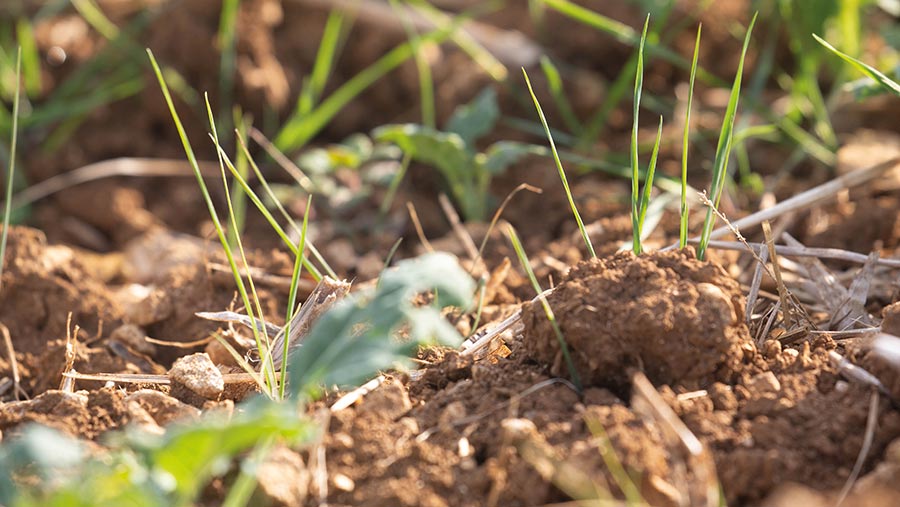
© Tim Scrivener
6. Move as little soil as possible
Try to minimise the movement of soil, he says. He advises lifting tines and discs that are not needed, or look at other measures such as opting for Dutch openers or low-disturbance tines.
Even conventional direct drills can disturb a surprising amount of soil, stimulating blackgrass to emerge in the seed-bed.
7. Tailor cultivation and nutrition to soil and sowing date
When deploying delayed drilling as a measure, farmers are limiting potential yield. So how can they help minimise this by using nutrition and cultivations to build on the success of reducing the weed population.
Mr Felce has been looking at the use of P and K, because of the high levels of calcium in the chalky boulder clay soil at the site. This is because high calcium levels can affect availability of other nutrients.
He explains that calcium binds to sites, so affecting potassium and magnesium availability.
He found that there was a benefit when direct drilling wheat and applying fresh P at drilling and K in the spring, with yield going from 6.73t/ha to 7.71t/ha.
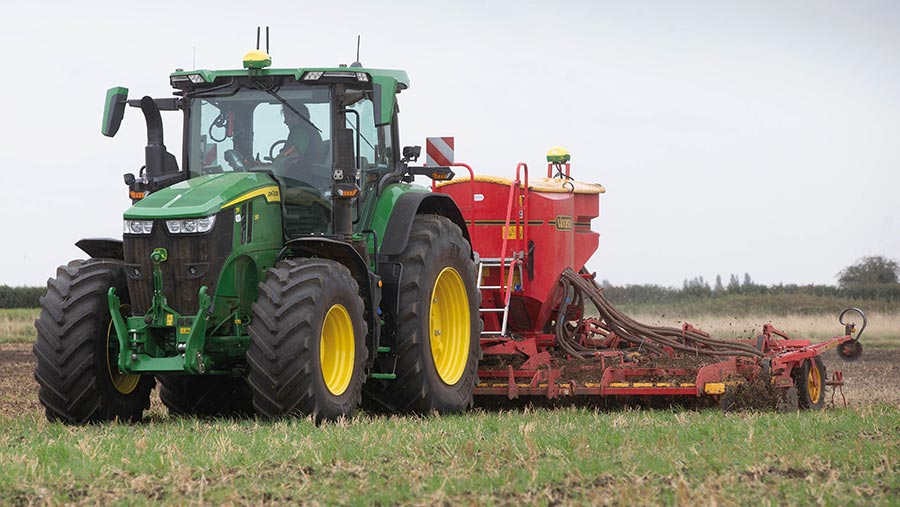
© Tim Scrivener
However, when the field was ploughed, there was no real difference as rooting was no longer impeded because of aeration.
Similarly, there was less response in hybrid barley because of its more vigorous rooting.
With cultivations, where soils are tight and anaerobic, opening them up with metal can give valuable access to roots and associated increases in biological activity and performance.
8. Don’t rely on catch or cover crops on heavy soil in a bad blackgrass situation
Mr Lloyd has looked at several different species, grown straight or as mixes, but in most cases, there has been little benefit seen in blackgrass control.
However, there was tendency to see improved organic matter levels when growing cover crops, which is important.
9. Maintain greatest rotation flexibility
Mr Lloyd’s ninth point is the need to be flexible on crop choice. One trial had three strips comparing three different cultivation systems which had very different rotations.
There were huge differences between the best and worst gross margins across the five-year rotation, ranging from £1,329/ha to £3,881/ha. This difference equates to £510/ha a year, which is clearly the difference between a profit and a loss.
He observed that some of highest margins and lowest blackgrass levels came from spring cereals in the rotation
When spring barley is in the rotation, one factor is when to drill it. Mr Lloyd advises waiting for the right conditions.
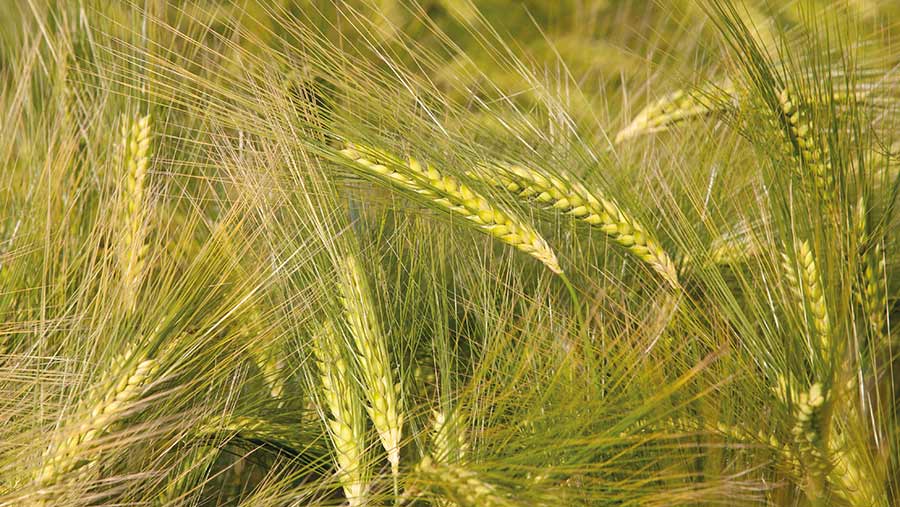
© Tim Scrivener
He looked at February and March drilled spring barley and saw £305/ha versus £535/ha gross margins due to better blackgrass control. Drilling later meant the crop got away quicker in ideal conditions, so competed with the weed.
“When drilled into decent, warm, nice soil, it will be competitive.”
Another question asked is how many spring crops are needed in a row to get levels down?
His work shows that several spring crops in a row may not be sufficient to deal with particular blackgrass problems.
Wheat drilled after four successive spring crops had 84 ears/sq m. This came down to 28 ears/sq m when drilling three weeks later.
Finally, growers ask if they can grow a second wheat to chase more income. Mr Lloyd says the answer is yes and no. “It depends on the field history.”
For example in one trial (see table), there were two different situations, one got it right and the other got it wrong, resulting in a 3.65t/ha yield difference.
“When deciding, growers need to look at the history. How much blackgrass was there in the crop before? Then weighing up the history you will know if you can grow a second wheat,” he says.
Effect of field history on second wheats |
|||||
|
2015 and 2016 |
2017 |
Yield (t/ha) |
Gross margin (£/ha) |
Blackgrass 2016 (ears/sq m) |
Blackgrass 2017 (ears/sq m) |
|
2015 fallow 2016 plough, Edgar drilled late |
Skyfall, deep one pass, drilled early |
10 |
784 |
2 |
28 |
|
2015 Claydon, W beans 2016 deep one pass, Edgar drilled early |
Skyfall, deep one pass, drilled early |
6.35 |
236 |
192 |
412 |
10. Base management on a five-year field history
The final learning is that things done several years ago (rotations, cultivations etc) can have an impact today, so you need to look at history.
He again points to one of the rotation blocks in the trial in 2021 which showed a 20-fold difference in blackgrass head counts between cultivation strategies. This was despite them all having similarly low weed populations for the previous two years, when late-drilled with minimal soil movement after a catch/cover crop.
The differences were due to going a little deeper to establish a cover crop, followed by a wet winter and cold dry spring, which reduced crop competitiveness.
“Working deeper brought up blackgrass seed which reflected the previous rotation and cultivations,” he says.
“This will cost yield where we cultivated slightly deeper by maybe 3cm in our min-tilled block to establish a catch/cover crop. This block has been min-tilled/direct drilled for five years. It just demonstrates that if you move to low disturbance, don’t change the cultivation depth.”
In another block, even though the mistake was made of cultivating just a little deeper in the catch/cover crop area, overall levels were still low, with the highest plot at 16 ears/sq m, but history shows the previous cropping lead to low levels of seed return over the years.
“But if it had been a higher level, it would have come to bite you. So you need to be aware of field history,” Mr Lloyd says.

